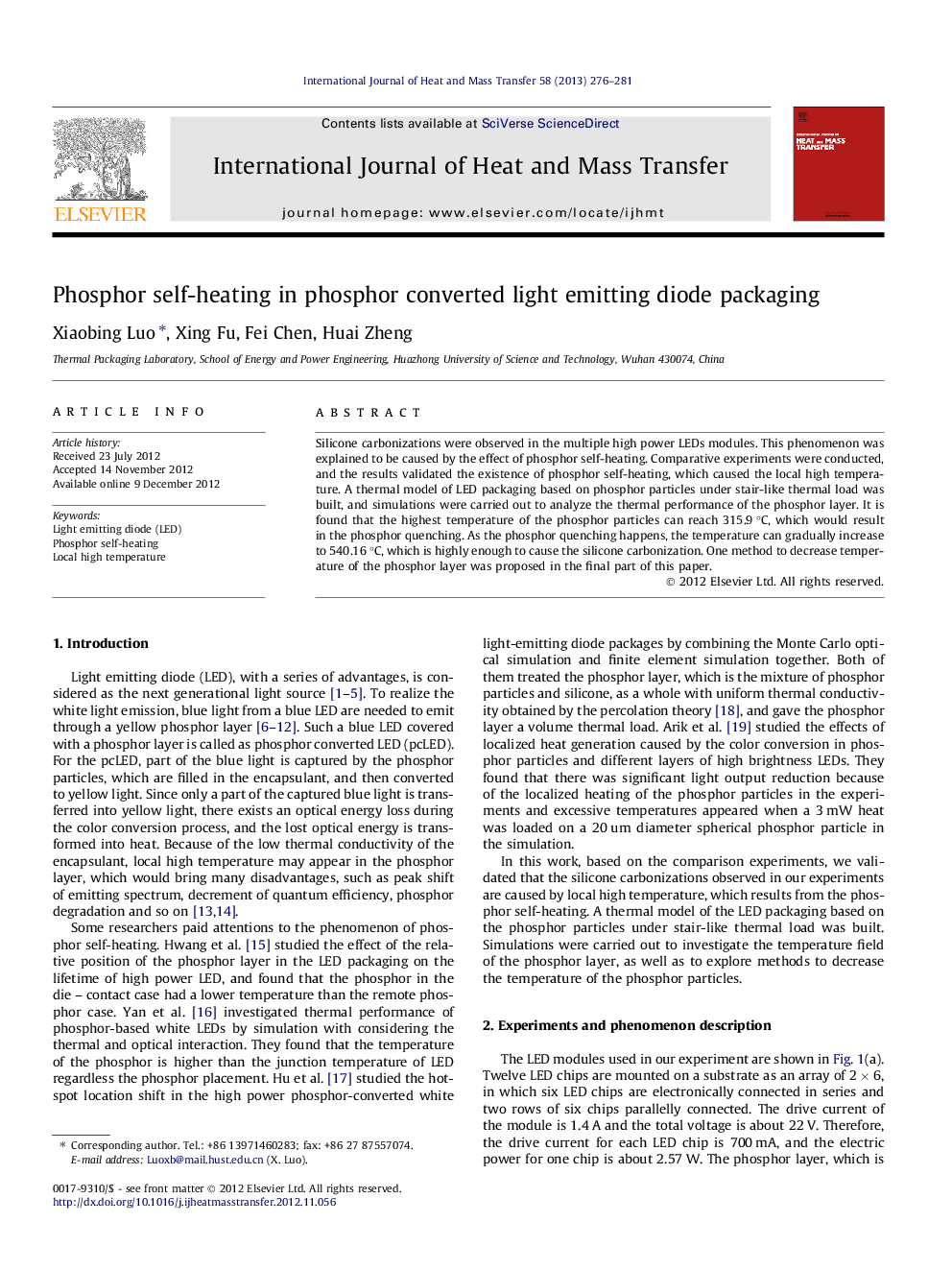| Article ID | Journal | Published Year | Pages | File Type |
|---|---|---|---|---|
| 658443 | International Journal of Heat and Mass Transfer | 2013 | 6 Pages |
Silicone carbonizations were observed in the multiple high power LEDs modules. This phenomenon was explained to be caused by the effect of phosphor self-heating. Comparative experiments were conducted, and the results validated the existence of phosphor self-heating, which caused the local high temperature. A thermal model of LED packaging based on phosphor particles under stair-like thermal load was built, and simulations were carried out to analyze the thermal performance of the phosphor layer. It is found that the highest temperature of the phosphor particles can reach 315.9 °C, which would result in the phosphor quenching. As the phosphor quenching happens, the temperature can gradually increase to 540.16 °C, which is highly enough to cause the silicone carbonization. One method to decrease temperature of the phosphor layer was proposed in the final part of this paper.
